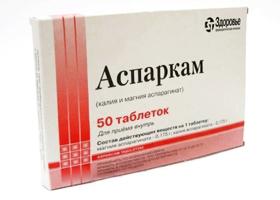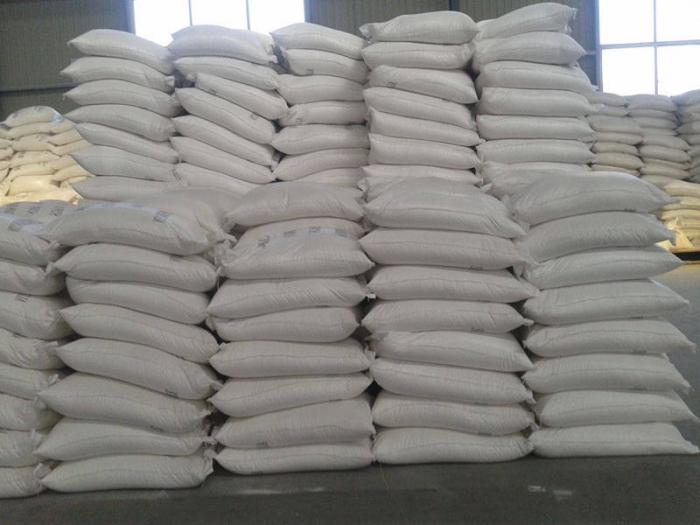Magnesium sulphate (fertilizer): instructions for use, prices
For the rapid and proper development of garden andgarden crops need a variety of micro- and macro elements. In addition to nitrogen, phosphorus and potassium, plants should receive from the soil and magnesium. It is impossible to achieve good yields without using fertilizer containing this substance. Most often, its deficiency in soil is compensated by applying such a fertilizer as magnesium sulfate (MgSO4).
Role in the formation of plants
With a lack of magnesium in the soil in the garden,garden and agricultural crops is slowing down the process of chlorophyll formation. That is, without this macronutrient in the tissues of plants, the processes of photosynthesis simply stop. In addition, magnesium:
- stimulates the assimilation of phosphorus by plants;
- activates in the tissues of cultures more than 300 enzymes.
With enough magnesium in the soilplants much faster accumulate the proteins they need. And consequently, they begin to share cells more actively. Also, this macro-element stimulates the formation of pectin substances in tissues and improves the fruit's taste.

What is MgSO4
To replenish stocks of this substance in soil it is possible withapplication of various fertilizers (ammoshenite, vermiculite, dunite flour, etc.). However, the most common supplement to this group is magnesium sulfate, the price of which is very low. This substance is a pure white, highly soluble in water crystals with a specific taste. In another way, magnesium sulfate is also called bitter salt. In addition to agriculture, it is used in medicine, food and heavy industry.
Magnesium sulphate is produced by the interaction of the following substances:
- sulfuric acid;
- oxide, carbonate and magnesium hydroxide.
Sometimes it is also isolated from sea water or from minerals of kieserite or epsomite.

Use as a fertilizer
Magnesium sulphate is a high-speed fertilizer,and therefore is used mainly in intensive agriculture in the cultivation of cereals and other major crops. In most cases, it is recommended to use it on neutral and slightly acidic soils. It is on such soils that plants often lack magnesium.
In addition, MgSO4 is used:
- in greenhouses;
- in vegetable growing of open ground;
- on intense meadows.
This fertilizer can be used for both root and sheet dressings.

Use for vegetable crops
In gardens and in kitchen gardens as a top dressing usuallyMagnesium sulphate 7-aq. (MgSO4 x 7H2O) is used. The most acute for the lack of this macroelement are such vegetable plants as potatoes, cucumbers and tomatoes. To fertilize vegetable crops, this fertilizer is best used in the spring simultaneously with nitric and phosphorous agents. When preparing the soil in April, you should:
- under the seedlings of tomatoes and cucumbers - 7-10 g / m2 fertilizer;
- for other crops - 12-15 g / m2.
Magnesium sulphate for pelargonium, marigold, chamomile and other ornamental herbaceous garden crops is used in the same amount as for vegetable.
If this macro-nutrient is deficient in soiltop dressing should be done also throughout the season. Usually the soil under the plants is fertilized with MgSO4 x 7H2O once every three weeks. For root feeding, magnesium sulfate is diluted at a rate of 25 g per 10 liters of water, and for leafy ones - 15 g per 10 liters. The solution consumption for vegetable and flower crops should be about 1-1.5 liters per square meter.
Application for garden shrubs
Under raspberry, currant, gooseberries, bush roses,chubushnik, lilac, etc. Magnesium sulphate is also the first time it is desirable to make in the spring. At the same time, about 30 g of funds are used per square meter of the trunks. During the season leaf bushes are usually used for shrubs. Spray the plants followed by a solution of 15 g of magnesium sulfate and 10 liters of water. The consumption of the product should be 1.5-2 l / m2.

Magnesium sulphate: application for fruit trees
Apple trees, plums, pears and apricots with sulfuric acidmagnesium fertilize in April in an amount of 30-35 grams per square meter of the near-barrel circle. During the season, low fruit trees, like shrubs, are fed by sprinkling the crown. Older apples and pears are more convenient, of course, fertilize under the root. In the first case, feeding is done at the rate of 2-3 liters per tree, in the second - 5-10 liters. Actually, the solution itself is prepared in a proportion of 15-25 g of the agent per 10 liters of water.
Supporting fertilizing
The looser the soil on the site and the lower its pH,the less amount of magnesium it contains. Thus, sandy and sandy-loamy sod-podzolic soils are poor on this macroelement. Owners of land with such a land should necessarily use magnesium sulphate and in the autumn - as an additional top dressing. At this time of year fertilizer is brought under the digging at the rate of 50-100 g per square meter.

In order to find out exactly what amount of magnesium sulphate is needed in this particular area, it is possible to order a study of the soil for the composition in a specialized laboratory.
How to determine the lack of magnesium in the ground
Laboratory research helps accuratelyset the right amount of fertilizers, including such as magnesium sulphate. However, they are not cheap in our time. Therefore, many summer residents prefer to determine the shortage of a substance in the soil according to the state of the crops themselves.
The lack of magnesium in growing garden and garden plants is manifested primarily in the negative changes in the state of leaf blades. The introduction of MgSO4 into the soil is necessary if:
- the tissues on the edges and near the veins of the leaves of the cultures acquired yellow, red or purple color;
- The plates strongly wrinkle and become dome-shaped due to the bending of the tips to the top.
Very often it happens that some leaveson plants, because of the shortage of MgSO4, even die completely. Show signs of magnesium starvation in garden and garden crops always start from the bottom. The topmost leaves change their color last. In cabbage, the lack of magnesium causes marbling of tissues.
In addition to negative changes in the state of the leaves, the lack of this substance in the soil can lead to poor fruit development and, as a result, to a decrease in yield.

How much does magnesium sulphate
Its widespread prevalence of this top dressingreceived not only because of the effectiveness and speed of action. Very low cost also explains the popularity of such a fertilizer, as magnesium sulfate. The price for the variant MgSO4 x 7H2O varies within the range of 100-120 rubles. for a standard package (1 kg). Normal magnesium sulphate costs 40-50 rubles / kg, depending on the manufacturer and supplier.
</ p>







